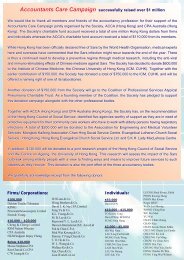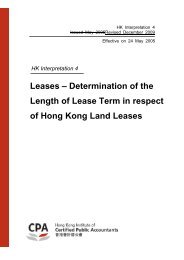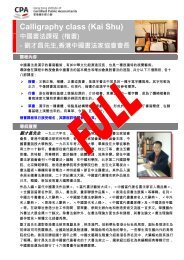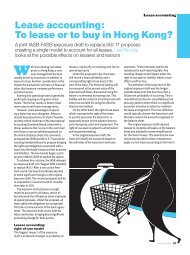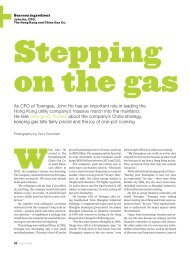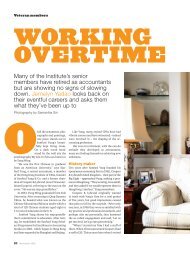Update No. 124 - Hong Kong Institute of Certified Public Accountants
Update No. 124 - Hong Kong Institute of Certified Public Accountants
Update No. 124 - Hong Kong Institute of Certified Public Accountants
Create successful ePaper yourself
Turn your PDF publications into a flip-book with our unique Google optimized e-Paper software.
Requirements<br />
USING THE WORK OF INTERNAL AUDITORS<br />
Determining Whether, in Which Areas, and to What Extent the Work <strong>of</strong> the Internal Audit<br />
Function Can Be Used<br />
Evaluating the Internal Audit Function<br />
13. The external auditor shall determine whether the work <strong>of</strong> the internal audit function can be<br />
used for purposes <strong>of</strong> the audit by evaluating the following:<br />
(a) The extent to which the internal audit function’s organizational status and relevant<br />
policies and procedures support the objectivity <strong>of</strong> the internal auditors; (Ref: Para. A5–<br />
A9)<br />
(b) The level <strong>of</strong> competence <strong>of</strong> the internal audit function; and (Ref: Para. A5–A9)<br />
(c) Whether the internal audit function applies a systematic and disciplined approach,<br />
including quality control. (Ref: Para. A10–A11)<br />
14. The external auditor shall not use the work <strong>of</strong> the internal audit function if the external auditor<br />
determines that:<br />
(a) The function’s organizational status and relevant policies and procedures do not<br />
adequately support the objectivity <strong>of</strong> internal auditors;<br />
(b) The function lacks sufficient competence; or<br />
(c) The function does not apply a systematic and disciplined approach, including quality<br />
control. (Ref: Para. A12–A14)<br />
Determining the Nature and Extent <strong>of</strong> Work <strong>of</strong> the Internal Audit Function that Can Be Used<br />
15. As a basis for determining the areas and the extent to which the work <strong>of</strong> the internal audit<br />
function can be used, the external auditor shall consider the nature and scope <strong>of</strong> the work that<br />
has been performed, or is planned to be performed, by the internal audit function and its<br />
relevance to the external auditor’s overall audit strategy and audit plan. (Ref: Para. A15–A17)<br />
16. The external auditor shall make all significant judgments in the audit engagement and, to<br />
prevent undue use <strong>of</strong> the work <strong>of</strong> the internal audit function, shall plan to use less <strong>of</strong> the work<br />
<strong>of</strong> the function and perform more <strong>of</strong> the work directly: (Ref: Para. A15–A17)<br />
(a) The more judgment is involved in:<br />
(i) Planning and performing relevant audit procedures; and<br />
(ii) Evaluating the audit evidence gathered; (Ref: Para. A18–A19)<br />
(b) The higher the assessed risk <strong>of</strong> material misstatement at the assertion level, with<br />
special consideration given to risks identified as significant; (Ref: Para. A20–A22)<br />
(c) The less the internal audit function’s organizational status and relevant policies and<br />
procedures adequately support the objectivity <strong>of</strong> the internal auditors; and<br />
(d) The lower the level <strong>of</strong> competence <strong>of</strong> the internal audit function.<br />
© Copyright 6 HKSA 610 (Revised) (December 2012)



